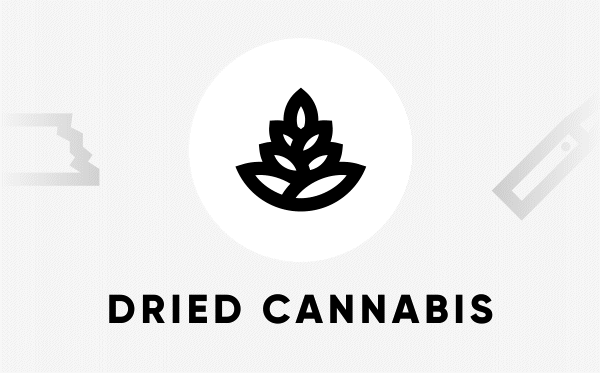Effects
Cannabis is known for its purported physical and psychotropic effects. Cannabis can alter one’s perceptions, mood, behaviour and even physical sensations. That said, the effects can vary from person to person based on several factors.
The effects can be divided into three main groups.

Relaxing
May be felt at both the physical level (relaxation of the body, feeling of lethargy, drowsiness) and the psychological level (calmness, relaxing, soothing). Relaxing effects are generally associated with the Indica category and Indica-dominant hybrids.

Stimulating
May create the impression of having more energy, wanting to be physically active or needing to be around others. May also give the impression of having increased concentration and creativity. Stimulating effects are generally associated with the Sativa category and Sativa-dominant hybrids.

Mood-altering
These effects are usually described by users as a feeling of euphoria or joy that sometimes takes the form of uncontrolled laughter. Generally speaking, mood-altering effects can be caused by all strains except those with little or no THC and a high level of CBD.

Note that none of these claimed effects has been scientifically proven and may vary from person to person and product to product, irrespective of category.
Undesirable effects
Short-term effects
Some users may temporarily experience unpleasant effects, including:
- dry mouth
- red eyes
- elevated heart rate
- paranoia
- anxiety
- confusion
- high blood pressure
- nausea
- dizziness

Though it has yet to be scientifically proven, the presence of CBD may modulate some of the undesirable effects of cannabis. Further research is required to validate this claim.
Long-term effects
For some people, regular (once a week or more) and long-term cannabis use can have adverse effects. These include:
- forgetfulness
- trouble concentrating
- heart problems
- dependency
- cannabis use disorder
- lung disease
- psychosis and/or schizophrenia (in people with a genetic predisposition or other pre-existing medical conditions)
- increased tolerance of THC and other cannabinoids.

Adolescents and young adults age 25 and under are more at risk of developing negative effects related to cannabis use. Research shows that developing brains are more vulnerable to cannabis compounds, particularly in the areas of decision-making, problem-solving, memory and emotional regulation.
What causes the effects
The effects of cannabis are caused by, among other things, the main active cannabinoids, including tetrahydrocannabinol (THC) and cannabidiol (CBD), which are mainly found in the plant’s flowers.
THC is the main psychoactive compound in cannabis. It is responsible for most of the purported psychotropic and physical effects, including euphoria. Cannabis-induced euphoria is often referred to as being stoned or high or having a buzz. THC can occasionally cause undesirable effects, such as paranoia and anxiety. The euphoric phase is often followed by a period of physical and mental languor, commonly called a down, that can last for several hours.
CBD has few if any euphoric effects. Instead, it is being studied to better understand how it affects the body and interacts with other cannabinoids, including THC. Note, however, that it is not currently possible to determine with certainty whether there are any beneficial effects of CBD use. The studies completed to date are inconclusive.

Other compounds found in cannabis, including the minor cannabinoids, terpenes, consumption method and genetics may also have an influence on the plant’s effects. As each person is unique, any effects may be felt differently from person to person.

Intensity of effects
The higher the THC content in cannabis, the more strongly the psychoactive and physical effects will be felt by users. This is also true for any undesirable side effects. But the cannabinoid content is not the only factor that impacts the intensity and duration of the effects.
Recent research has shown that the method of use also plays a role. The psychoactive effects of ingested cannabis (edibles, beverages, cooking ingredients) are typically more intense and longer lasting than those from inhaled cannabis (smoking, vaporizing, vaping, dabbing) or cannabis consumed sublingually (oral strips, oils, sprays).
To reduce the risk of an unpleasant experience or “bad trip,” we advise opting for small, infrequent doses of low-THC products. Note, too, that the type and intensity of the effects may vary from person to person.

Moderate

Medium

Strong

How long do the effects last?
| method of use | first appearance | peak | duration** |
| Inhaled cannabis (flowers, ground, hash, pre-rolled joint or vape) |
90 seconds to 5 minutes | 15 to 30 minutes | 2 to 3 hours |
| Ingested cannabis – under the tongue (sublingual oil, oral spray, oral strip) |
15 to 30 minutes* | 90 minutes to 2 hours | up to 6 hours and sometimes longer |
| Ingested cannabis – oral (edibles, beverage, cooking oil, tincture, decarb, capsule) |
30 to 60 minutes* | 90 minutes to 3 hours | up to 8 hours and sometimes longer |
*The effects of ingested cannabis may take two or three hours to appear. We strongly advise beginning with a small dose and waiting two to three hours before taking more, if desired.
**How long the pleasant and unpleasant effects last can vary depending on the type and strength of the product, the amount consumed, the method of use and the user’s tolerance level.
The effects of cannabis may vary from person to person, depending on several factors*:
- the cannabis category (Sativa, Indica ou Hybrid)
- the cannabis strain (Kush, Banana Split, etc.)
- the cannabis genetics
- the THC, CBD and minor cannabinoid level
- the amount of cannabis consumed
- the method of use (burning, vaping, vaporizing, ingesting, sublingual)
- the user’s tolerance level for cannabis (regular user vs. first-time user)
- the user’s physical and mental state, mood and health condition
- the context in which the product is used (alone, with friends, in a crowd, etc.).
*And possibly other factors not yet identified.
Choose the right product
It is important to choose a cannabis product and consumption method based on your level of experience, state of health and tolerance for potentially unpleasant effects. For personalized advice, speak with an in-store advisor or see the "Types of Products" section.

Three types of
cannabis
Indica, Sativa and hybrids: what’s the difference? learn more about cannabis species and hybrids and their many strains.
Methods
of use
Smoking, vaporizing or ingesting: each method for consuming cannabis has its own set of advantages and disadvantages.
Assistance
resources
Are you or a friend or family member dealing with a problem related to cannabis use? Several assistance resources are available to you. Take advantage of them!







